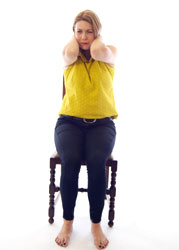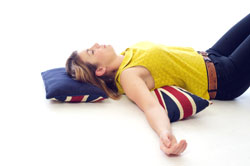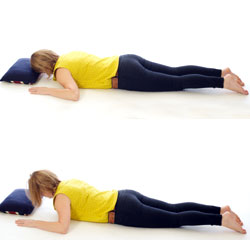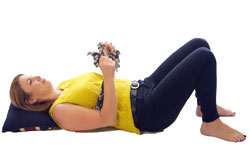UPPER BACK PAIN
Mechanical pain in the upper back may be result from an injury or overstrain to the discs, spinal joints, muscles, ligaments, tendons or fascial connections through this region. It can also be related to the mechanics of breathing that lie close to this part of the spine. That is, the ribs which form joints with the upper back.
Nerves irritated in the upper back can cause radiations of pain, pins and needles, tingling or numbness. These symptoms can radiate to the shoulders, arms and adjacent spinal areas, as well as to the front of the torso.
Osteopaths take time to assess a patient fully. Running through a case history, postural and mobility assessment. Further specialised tests can be carried out, or referred for if necessary.
Osteopathy is a manual form of treatment. It consists of a wide variety of soft-tissue massage, mobilisation and Osteopathic manipulation techniques. A treatment session is tailor-made to an individual’s needs.
Part of the treatment can be to offer management strategies and advice to better deal with a problem, and to prevent its return. Sometimes this involves prescribing exercises.
The following exercises can be useful when helping problems in this part of the spine. Your Osteopath can direct you as to which exercises suit you best.

Figure of 8
Sitting back into a chair, so your lower back can be supported by the seat. Gently clasp your hands behind your neck (don’t pull your head forward, make sure it’s a gentle hold.) Bring your elbows together in front of you, or as close as you can comfortably. With the points of your elbows, draw a number 8 laying on it’s side. Repeat this for 30 to 60 seconds to gently mobilise the upper back.

Upper Back Extension I
Lay on a mat / towel on the floor with your knees bent. Underneath the shoulder blade area, lay a small bolster cushion (as in the picture), or a towel rolled into a “sausage shape”. Relax into this position for 1 to 2 minutes, thinking about your breathing (see diaphragmatic breathing below).
In this exercise your head drops backwards, this needs to happen a little in order to get the movement through the upper back. However, it isn’t a neck position that suits everyone. A little support from a thin pillow can help. If you feel uncomfortable in your neck, any dizziness or unwell, please don’t do this exercise.

Upper Back Extension II
Lay on your front on a mat / towel on the floor. Allow your palms and forearms to rest on the floor, elbows approximately level with the shoulders. Extend up through your upper back. Make sure the movement is in your upper back.
This isn’t an exercise for the neck or lower back, so keep the neck in a neutral position and make sure the movement doesn’t hinge through the lower back. This can be tricky to grasp at first, so be careful and keep trying if it isn’t painful to do. Think about taking the movement just to shoulder blade level to start. Repeat 5 times.

Diaphragmatic Breathing
Lay on the floor or a bed. This is a relaxing exercise, so may be do it to help you drop off to sleep at night? Place your hands on your chest and lower rib age, or wrap a scarf around the lower rib age, holding the two ends at the front (see picture).
Think about breathing in through your nose and out through your mouth. When you breathe in try and use the lower ribs and diaphragm as much as possible, in order to fill the lungs and utilise the diaphragm well. The hands placed on chest and ribcage, or the scarf, just serve as some feedback to see if you’re achieving this. Try practising for 1 to 2 minutes at a time.
